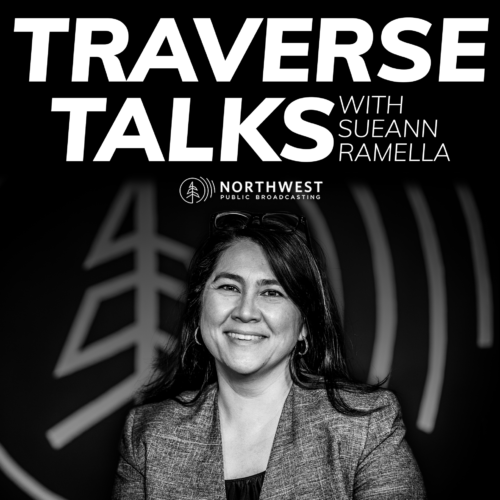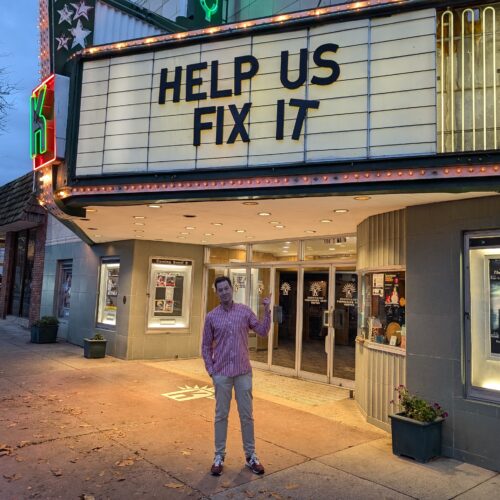
‘Traverse Talks’ Episode 4: Carlos Gil On Mexican-American Assimilation, Identity And Immigration

In the fourth episode of Traverse Talks with Sueann Ramella, author and University of Washington professor of Chicano studies Carlos Gil discusses his views of assimilation as a descendant of Mexican immigrants growing up in California. Listen to his episode below or stream Traverse Talks with Sueann Ramella wherever you get your podcasts.
SUBSCRIBE: Spotify / Apple Podcasts / NPR One /
Listen
Conversation Highlights:
Carlos’ Views on How His Descendants View Their Own Ethnicity:

A photo from Carlos B. Gil’s book, “We Become Mexican American: How Our Immigrant Family Survived to Pursue the American Dream.”
I have to respect what younger people, how younger people even in my family view their own ethnicity, because I don’t understand it totally. I understand my view of my own ethnicity but I don’t understand their view of their own ethnicity and I have to respect that right for them to view their ethnicity in their own way. And so, I know that my descendants down the line, they see themselves as being Latinos or Mexican Americans in their own way. A way I don’t fully comprehend, but I do know that I have to respect that because only they can define it in their own way when the moment comes that they want to define it.
Thoughts on Assimilation:
A very good example for Latinos to understand, especially Latinos of Mexican background is that one of the first major experiences of assimilation, that had any importance, was the assimilation that occurred after the Spanish arrived in Mexico. Out of that merging comes the mestizo people, a blended people and the cultural interaction is a new product. So we’ve had assimilation going on for 500 years and here we are in the 21st century worrying about assimilating into Anglo American society. My colleagues, especially my Latino colleagues, worry about assimilation too much. They say, “What are we gonna do about assimilation? What are we going to do about white supremacy?” And I say to myself, gosh, we’ve been wrestling with these things for a very long time.
Thoughts on Educating the Public on Race and Ethnicity:
It depends on what your purpose is. If you’re a teacher of any kind and if your teaching in an area that reflects your cultural background then you have no choice but to be someone who explains. If your purpose is to make people of diverse backgrounds work well and satisfactorily within a society, then there’s no other thing that you can do but explain. I’m 87 years old, I’ve been doing that all my life. Even at this point when I look back and say, by God, what have I done all my life? I’ve tried to explain who Latinos are, where they come from, why they came and how they fit into American society. There is no other way for me, but again, it depends on what your purpose is. What are you trying to do? If you see yourself as a teacher, then teach.
*Responses were edited for length and clarity.

Carlos Gil, left, and host Sueann Ramella after their conversation on January 30, 2020 in NWPB’s studios in Pullman, Wash.
Related Stories:

Captive Returns Home: The Story Of Wetxuuwíitin – ‘Traverse Talks’ Episode 42 – With Chairman Samuel Penney
Photo of Sam Penney recording Traverse Talks at the Nez Perce National Historic Park on March 10, 2022. Imagine a stranger took your family’s heirlooms and then offered you an

Psilocybin: Psychology, Policy and Possibilities – ‘Traverse Talks’ Episode 41 – With Sam Chapman
Sueann Ramella interviews Sam Chapman virtually on April 19, 2022. What do you really know about psilocybin, commonly known as magic mushrooms? Research on the substance has lagged behind in

You Inherited A House Full Of Stuff. What’s Next? ‘Traverse Talks’ Episode 38 – With Estate Services Owner Rich Old
Rich Old recording this episode of Traverse Talks on March 3rd, 2022. Grieving the loss of a loved one is already hard enough. To make matters worse, many people have

















